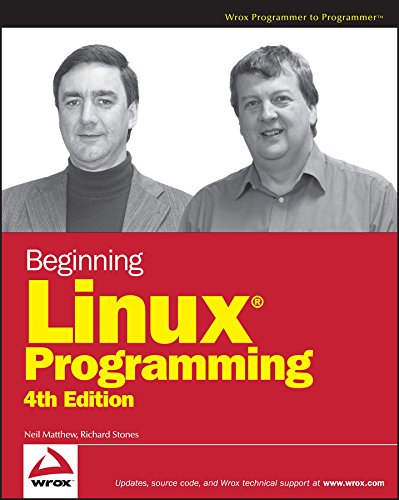
Vous cherchez un endroit pour lire des livres électroniques complets sans téléchargement ? Vous pouvez lire ici Beginning Linux Programming. Vous pouvez aussi lire et télécharger les nouveaux et les anciens complets E-Books. Profitez et relax complet Beginning Linux Programming documentation en ligne de lecture. livre thermomix gratuit en telechargement
. CLIQUEZ ICI POUR TÉLÉCHARGER CE LIVRE GRATUITEMENT
Beginning Linux Programming, Fourth Edition continues its unique approach to teaching UNIX programming in a simple and structured way on the Linux platform. Through the use of detailed and realistic examples, students learn by doing, and are able to move from being a Linux beginner to creating custom applications in Linux. The book introduces fundamental concepts beginning with the basics of writing Unix programs in C, and including material on basic system calls, file I/O, interprocess communication (for getting programs to work together), and shell programming. Parallel to this, the book introduces the toolkits and libraries for working with user interfaces, from simpler terminal mode applications to X and GTK+ for graphical user interfaces. Advanced topics are covered in detail such as processes, pipes, semaphores, socket programming, using MySQL, writing applications for the GNOME or the KDE desktop, writing device drivers, POSIX Threads, and kernel programming for the latest Linux Kernel.Beginning Linux Programming, Fourth Edition continues its unique approach to teaching UNIX programming in a simple and structured way on the Linux platform. Through the use of detailed and realistic examples, students learn by doing, and are able to move from being a Linux beginner to creating custom applications in Linux. The book introduces fundamental concepts beginning with the basics of writing Unix programs in C, and including material on basic system calls, file I/O, interprocess communication (for getting programs to work together), and shell programming. Parallel to this, the book introduces the toolkits and libraries for working with user interfaces, from simpler terminal mode applications to X and GTK+ for graphical user interfaces. Advanced topics are covered in detail such as processes, pipes, semaphores, socket programming, using MySQL, writing applications for the GNOME or the KDE desktop, writing device drivers, POSIX Threads, and kernel programming for the latest Linux Kernel.
